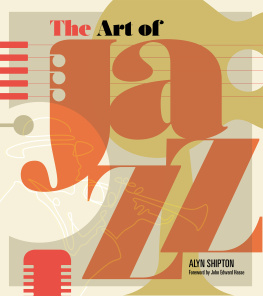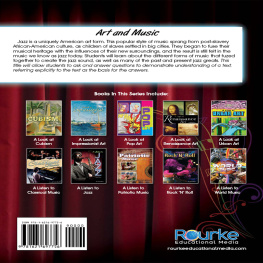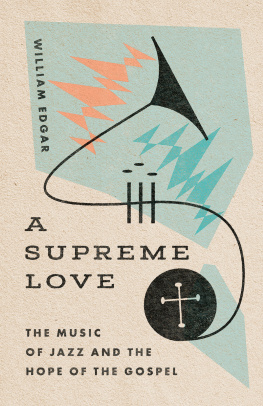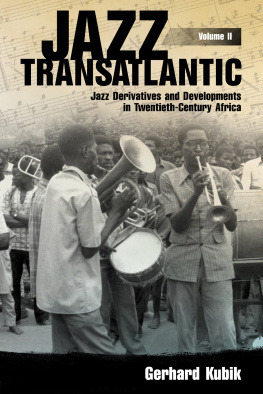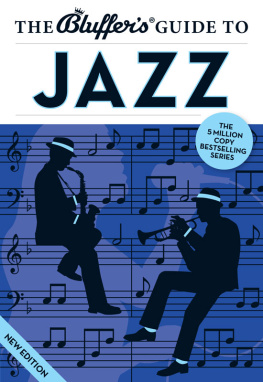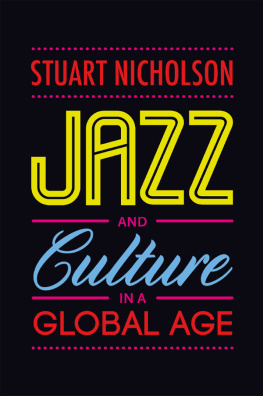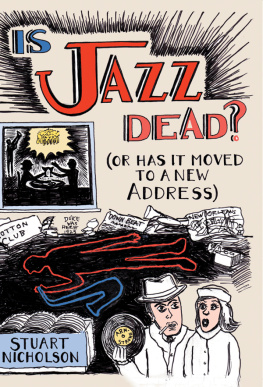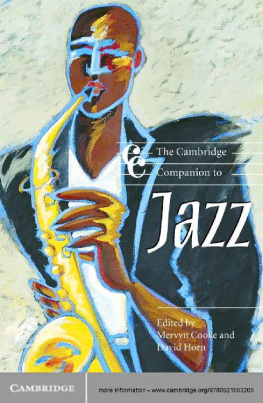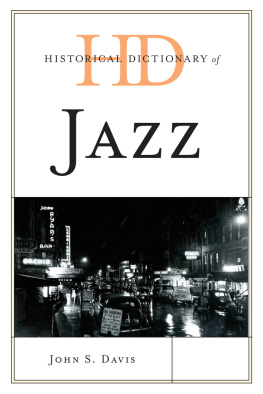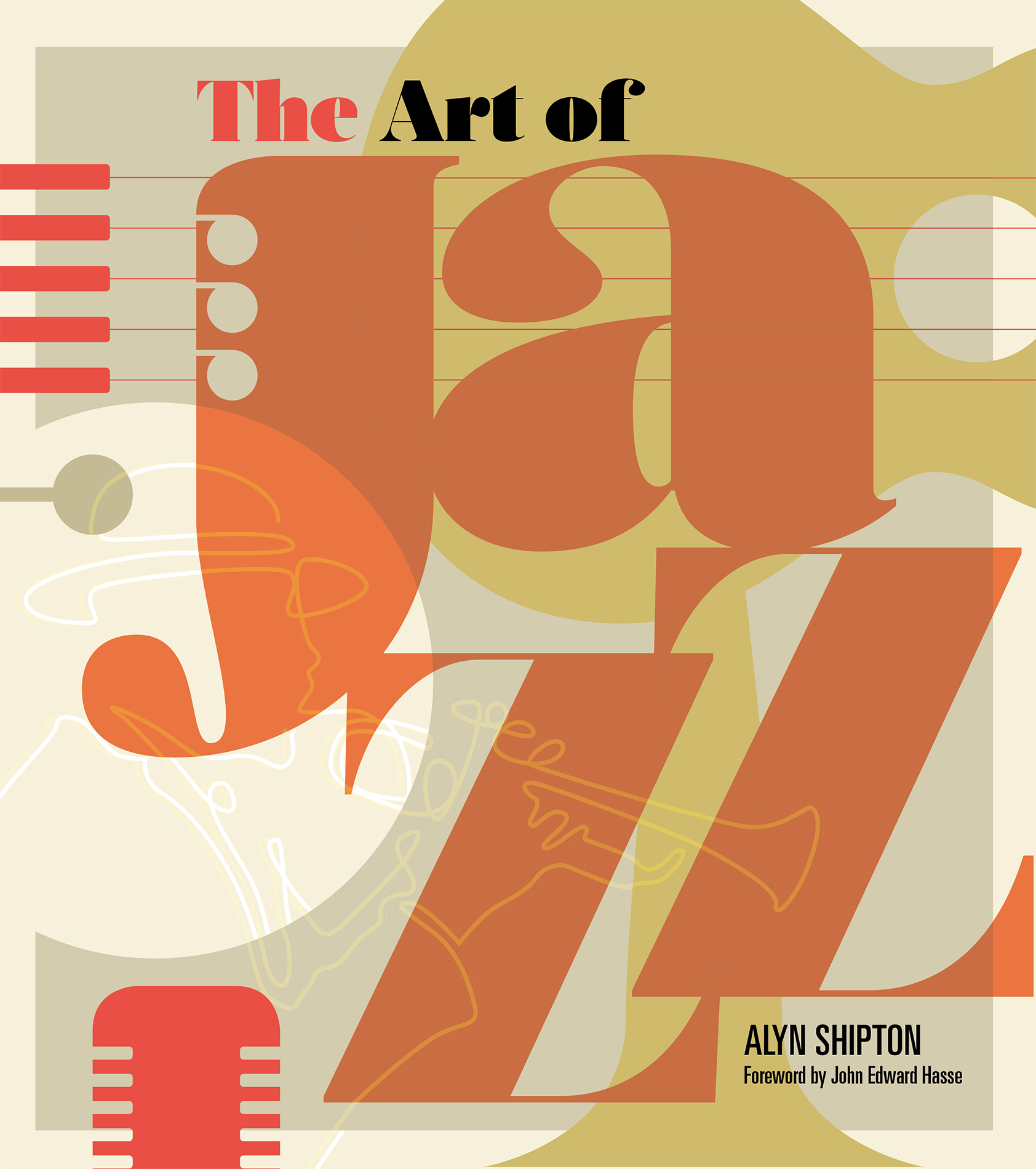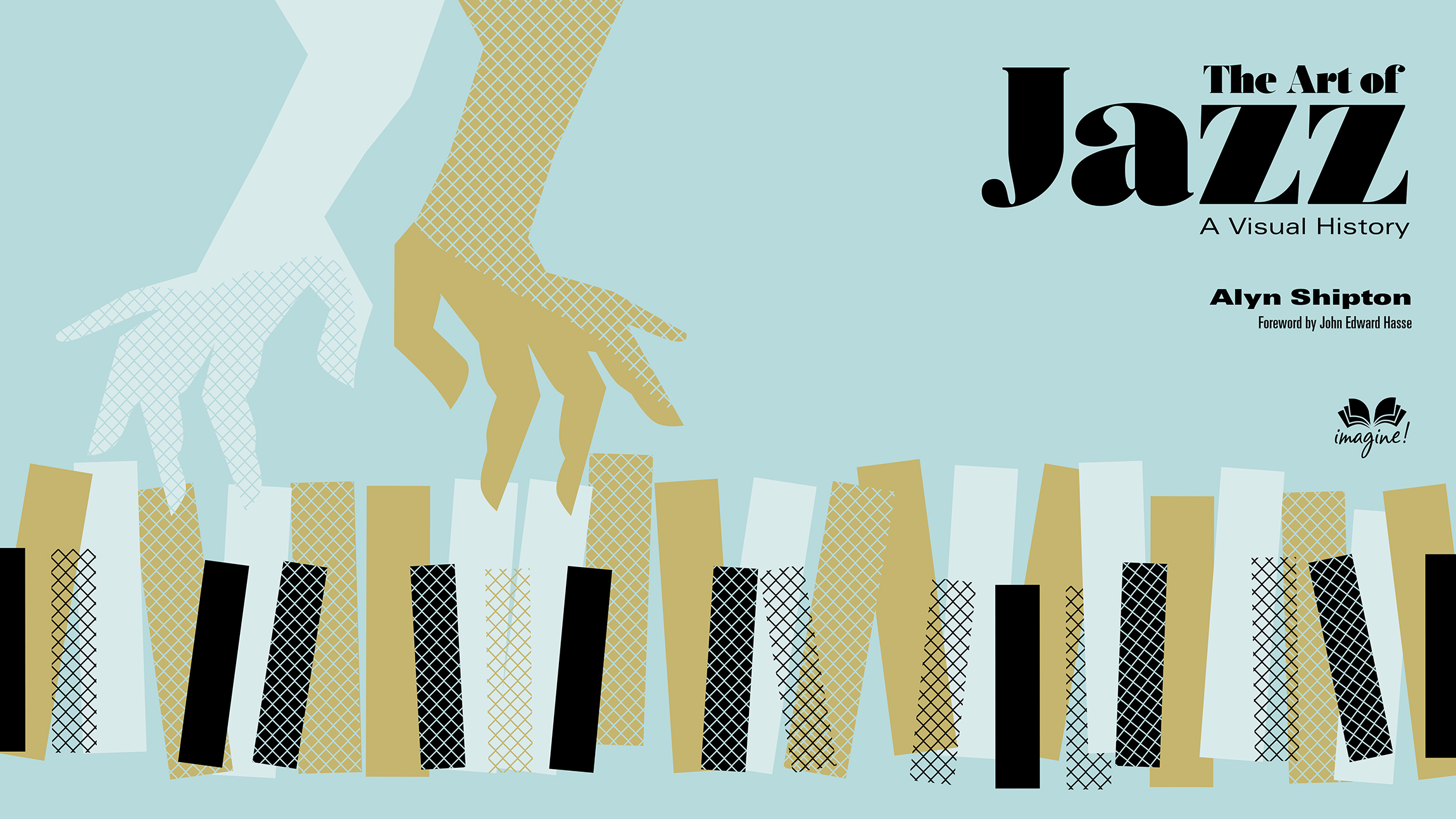All rights reserved, including the right of reproduction in whole or in part in any form. Charlesbridge and colophon are registered trademarks of Charlesbridge Publishing, Inc.
At the time of publication, all URLs printed in this book were accurate and active. Charlesbridge and the author are not responsible for the content or accessibility of any website.
Library of Congress Cataloging-in-Publication Data available upon request.
Foreword
The look of jazz.
How does jazz look? The answer is difficult to pinpoint, as few writers have addressed this question comprehensively.
Jazz appeals most directly to the ear, but also engages the eye. Yet the visual dimension of jazz is often overlooked. There are books about jazz photography, specific record labels, album cover design, and museum exhibitions, but almost nothing has been published taking on the overall picture of the music.
This is the first book to offer a 360-degree lookin the literal meaning of that wordat the history of jazz, from its nineteenth-century roots to its twenty-first-century eclecticism. Paintings and drawings. Portrait, studio, and documentary photography. Sheet music covers, record albums, posters, and advertisements. Imagery of musicians clothing, hair, eyeglasses, and facial expressions. Visualizations of the musicians, their milieu, and their music as metaphor.
This pioneering book links the art together in a narrative, contextualizes each element in the broader history of jazz, and names and explores some of the lesser-known illustrators, designers, and artists who shaped our perception of the music in an almost subconscious way. The artists were products of their times, and the author points to several instances of stereotyping, underscoring the fact that not all the artwork depicting African American musicians was flattering or racially sensitive.
Just as jazz has influenced poetry, fiction, dance, fashion, and vernacular language, so has the music affected the visual arts. And jazz can be strikingly visual, creating unforgettable and vivid sonic paintings such as Ellingtons eerie The Mooche, Miles Davis and Gil Evanss piercing Saeta, or Charles Minguss raucous Wednesday Night Prayer Meeting.
From the realm of jazz came some of the eras leading creative artists, pursuing instantaneous, high-level communication and expression. The brilliance of these artists affirms some of the most admirable values of our time: originality, individuality, risk-taking, cultural diversity, creative collaboration, and innovation.
All were basking in the freedom that jazz affords and encourages. If jazz means anything, wrote Duke Ellington, it is freedom of expression.
That leeway to experiment, to find and put forward ones personal voice and style, bursts from the pages of this book, whether implied by the music and musicians or evident in the illustrations that adorn this volume.
I first met Alyn Shipton in 1987, when he was producing an annual symposium at the Festa New Orleans Music in Ascona, Switzerland. He invited me to present a talk on ragtime, the subject of my book Ragtime: Its History, Composers, and Music, which he had published in the UK. I immediately admired his eloquence, breadth of knowledge, versatility, and musical chops. I realized that Alyn Shipton is a polymath of music: writer, historian, editor, publisher, radio host, and bassist. It was with keen pleasure I renewed his acquaintance in person in London, and again in 1989, in Ascona, where, at his invitation, I delivered a lecture on Duke Ellington, later the topic of my Beyond Category: The Life and Genius of Duke Ellington. I came to regard Alyns New History of Jazz, his books with Danny Barker, and his biographies of such figures as Cab Calloway, Fats Waller, and Dizzy Gillespie as essential jazz reading.
As do I, Alyn has a deep curiosity about jazz and a profound passion to share his learning with the public. All of us are fortunate to benefit from his erudition and insights, in his work to date and in this new book, The Art of Jazz.
John Edward Hasse
Curator Emeritus of American Music
Smithsonian Institution
Washington, DC
Recalling 1930s New York, critic Stanley Dance wrote, Charles Petersons photographs capture the spirit of those days better than any others. Artful monochrome shots like this, from a 1939 party, bring the swing era vividly to life. Here we see (left to right) Sister Rosetta Tharpe, Duke Ellington (playing her guitar), cornetist Rex Stewart, Cab Calloway, an anonymous French jazz fan, and singer Ivie Anderson.
Introduction: Before Jazz
It took until 1933 for the word jazz to make its way into the first Supplement to the Oxford English Dictionary, having been missing from the full twelve-volume work when it appeared in 1928, at the height of the Jazz Age. In that earliest entry, the precise origin of the term jazz is said to be unknown, but the article confirms that it was being used widely by the end of World War I on both sides of the Atlantic.
The dictionary is helpful because its linguistic sleuths have combed through a huge variety of printed material to log some of the earliest appearances of every word it includes, placing each in a context that would help readers understand its meaning. Thus, alongside reports of an anonymous jazz band playing in 1917, are mentions of another group called John Lesters Frisco Five, and a year or so later we see accounts of bathers doing a jazz dance on the beach. Although couched in the racist language of the time, we go on to read that the first jazz musicians, mainly African American, slur the notes, they syncopate, and each instrument puts in a lot of little fancy bits on its own. Most interesting, however, is that almost immediately after the word was coined, and in parallel with descriptions of music and dance, it was used to describe art, design, and clothing.
Newspapers reported jazz patterns in dress; they mentioned jazz-colored silks, that jazz stockings are the latest thing, and that a famous artist jazzed up a color scheme. So, even if the word itself is now believed to have first appeared in the San Francisco Bulletin in March 1913 to describe a dance full of vigor and pep, the wider ramifications of jazzas a syncopated, exotic music, garish and vivid, that broke rules, with more than a hint that the name also described the act of sexrapidly transferred itself into the visual and graphic arts.
Given the rather approximate nature of the etymology of the word jazz, it would be hard to say exactly when a music that we might recognize as jazz began. What we can see, however, is that a century on from those obscure beginnings, its symbiotic relationship with the visual arts has been celebrated internationally in a series of major exhibitions. First out of the starting blocks was La Sicle du Jazz, curated by the Muse du quai Branly in Paris, and which ran there, and in Rovereto in Italy and Barcelona in Spain, between late 2008 and 2009. Then came I Got Rhythm: Art and Jazz Since 1920 at the Kunstmuseum in Stuttgart from 2015 to 2016, closely followed by The Jazz Age: American Style in the 1920s at the Cleveland Museum of Art and the Cooper Hewitt, Smithsonian Design Museum in New York in 2017. In early 2018, London followed suit with Rhythm and Reaction at Two Temple Place, the Thameside museum in the former Astor family mansion.

